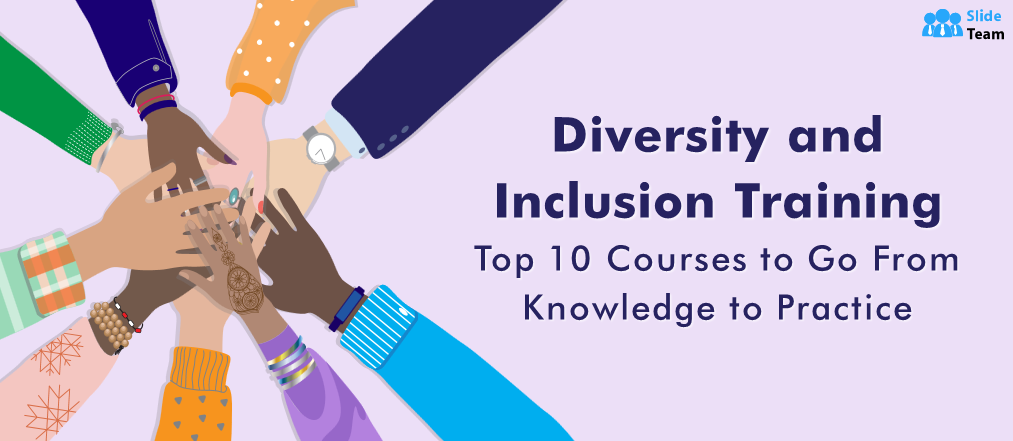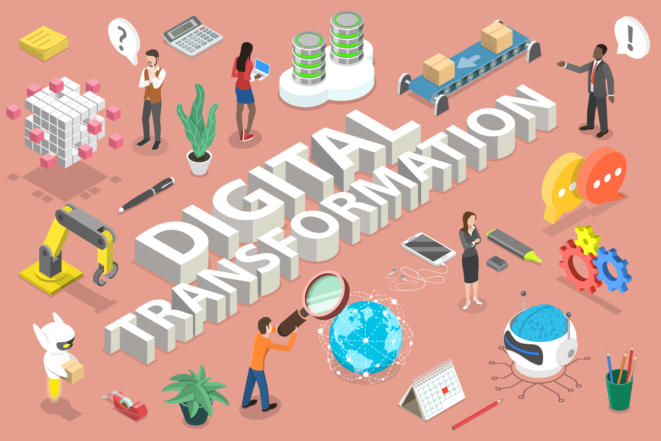
Hardware-based solutions to business problems like poor sales or customer disengagement are on their last leg, even as the enterprise may be making purely physical products like surgical implants for knees.
All that will matter for businesses as work from their employees will be fluid intelligence, the uniquely human ability to think on our feet, and the decisions we make. The decisions taken would be based on pure data or the relationship between data points and common sense. The business objective remains the same, to serve, engage and retain the customer on his/her terms, with profitable and ethical pricing.
Considering the workflow ‘algorithm’ above, we have enough data and the requisite human touch to turn all transactions into a win-win.
Download Content-Ready Digital Transformation Training PowerPoint Deck
Digital transformation captures customer behavior in terms of numbers and patterns or data points. The aim is to give business owners a fair idea of what to expect, if they offer their product or services at a specific time, price, quantity, and quality.
Since this is the relatively fickle human behavior we are dealing with, many iterations may still be required to crack a deal. Businesses, however, are willing to try this as it is a better long-term, cost-effective model than the acquisition and retention of customers in random, mass-marketing ways. In fact, even mass customization is a doable project these days.
Digital transformation has also given a new look to many businesses where the raw material, or the fueling force, has changed to pure technology.
Today’s businesses want insights, based on verifiable and empirical data. The management studies this data and makes intelligent, insightful decisions that help the topline or bottom line — in most cases, both.
As we go through five examples where businesses have used digital transformation successfully, remember that in some cases the distinction between a product or a service has blurred. What has remained true, and is still relevant, is the global quest of businesses to do a better job at customer engagement.
From your food-on-wheels vendor to Elon Musk’s SpaceX, market relevance and customer satisfaction are key.
As we move on to specific industries, a caveat is in order. Digital transformation gives us automation, with the autonomy to make decisions, still with fallible humans. Technologies like Artificial Intelligence (AI) aim to replicate our autonomy as well. The best outcomes, however, will always result in human-technology collaboration.
The sectors where we will study digital transformation are:
- Entertainment
- Healthcare
- Education
- Manufacturing
- Retail
1. Entertainment: Where’s the remote

From around $500 billion in 2011 to $750 billion now, the US entertainment industry has grown 50% with decentralization of distribution platforms a key trend. The customer knows that he can create his own personal entertainment and stream it around the world at little cost.
The remote of the entertainment industry is in the hands of content consumers, who speak with his/her remote or refuse to scroll down a webpage.
As a case study, consider The Walt Disney Company. With a century’s successful legacy, and the name itself worth a premium, it launched Disney+ in 2019. This was 26 years after Netflix had launched the service. Disney, however, is still managing to compete.
The patented mouse of Disney, however, continues to exhibit the nerve to short-circuit the digital network. The brand has entered the digital entertainment subscription-based service, but it still believes content is king.
Over the years, Disney has also assumed the role of a brand marketing company for its content. Its moniker or mission of a ‘Dreams Factory’ lives on. It creates real value from its differentiated content and continues to command leadership in this competitive space. Where it cannot build unique value, it buys the brand, as in the case of Pixar and Marvel.
In fact, founder Walt Disney’s nose for the future had him create a blueprint or the Business Model Canvas for his business, on display at the Disney Archives. This route map, created 65 years ago, lists all major value-creating networking platforms for the company. Apart from the internet and the digital tools, which were nowhere on the horizon then, the legend had it all covered.
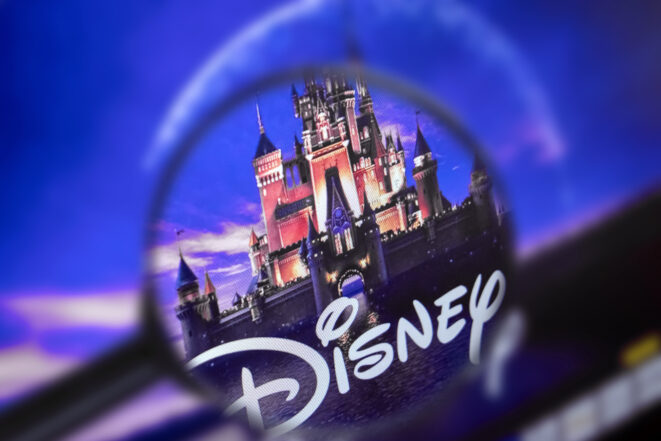
No wonder, the Disney brand still commands a premium. It took its time, but its unshakeable confidence that no one can tell a good story better than it has made it withstand an unprecedented technology onslaught. The company, in fact, now wants to stay ahead of the digital transformation curve as well.
In December 2021, Disney applied for an Augmented Reality (AR) patent to create a virtual tour experience for guests at its theme parks.
Computer-generated storytelling is also allowing Disney executives to create a version of the product before it invests top dollar in the creation of a movie. For a fraction of the movie cost, these technologies allow creative expression of the story and help Disney executives to make a decision. A real use case of digital transformation indeed.
2. Healthcare: The tipping point
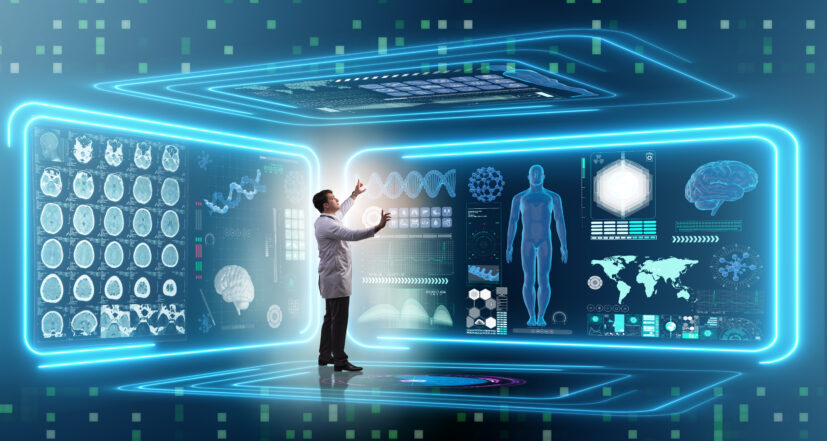
Around a million robotic surgeries are conducted in the US every year; the figure could rise to 3 million by 2025. The worldwide surgical robotics market was $4.7 billion in 2018 and is expected to reach $15.4 billion by 2029. Clearly, there is a huge opportunity for digital transformation in terms of surgery automation in the healthcare universe.
The reinvention, however, is ‘delegating’ the repetitive tasks to the robot, the doctor is still in command. The doctor has to first train the robots in terms of specific and precise movement, depending on the kind of surgery.
With robotic surgeries gaining increased acceptance, empathy will become a high-intellectual pursuit in its own right. Here too, AI is playing its part in inculcating empathy in healthcare. This also correlates with wellness emerging as the new benchmark of healthcare excellence.
In his book, ‘Focus’, Daniel Goleman says that doctors lacking empathy are sued more often. Goleman elaborates, “Our tone of voice matters immensely to the impact of what we say…doctors who deal with patients in a warm and supportive voice are valued.”

The time is, thus, ripe for AI to make a significant impact. The hospital where doctors appear to be too busy or too stressed to have any empathy toward patients is a business disaster waiting to unfold.
Technology offers a helping hand here as well, with AI being used to detect, trace, and finally ‘teaching or programming’ the emotion to hospital staff. The key innovation is the AI tool’s feedback loop, which ensures that the prime emotion conveyed to the patient and his/her family, already in distress, is empathy.
A US health insurance major is using AI in a collaborative manner at its pharmacies to improve the quality of conversations of its pharmacy staff with customers. During the call, the AI tool gives the human real-time tips and suggestions. It is up to humans to reject or accept these.
The key win is that if the human accepts the suggestions that AI makes, it learns; if the human rejects the suggestion, then too the AI improves. The system, through several such iterations of mutual learning, understands the emotion of empathy, and other feelings we endure during bouts of illnesses.
This will pave the way for a palliative care system that is far more efficacious than anything the world has seen to date.
3. Education: The writing on the wall

According to the World Economic Forum, the global educational technology market is projected to expand to $342 billion by 2025. Technology intervention and inspiration have come in the form of online classes, and greater, and sometimes even free access to quality study material.
The $200 billion industry in the US is growing at a 4% CAGR and is an enormous opportunity for digital transformation. Consider the use case of Robotic Process Automation (RPA) in increasing efficiencies manifold, and improving learning outcomes. The teacher/tutor/professor is freed of monotonous tasks and can focus on skill upgrades. This means increased time is then spent on learning more and better.
For education technology businesses wanting to transform the sector, the definition of customer changes depending on who is the primary user. There is a strong case for targeted technological interventions in:
- Campus environment
- Learning methods
- Teaching methods
Online classes and all kinds of meeting software are, of course, commonplace. To make sure learning is internalized, we need to crack the code on better digital tools that help teachers in efficient, clear assessment and reader-adaptive books based on AI.

We also need a consensus on what constitutes learning. Is it ‘Exam-Clearance’ or is it ‘Exploratory Learning’, as in Finland?
As we ponder over this, the profile of the learner in our schools has changed. The vast majority of toddlers already have an intuitive connection with technology. Referred to as ‘digital natives’, these children, at the ages of 3 and 4, are operating the smartphones of their parents. Somehow, they have also self-learnt to get to the videos of their choice, without any help or training.
These digital natives process and consume information differently, so their education has to be tailored to it.
As the first step, classroom design must offer an experience and not just raw facts or theories. For much of the time, student engagement has not been a goal or a performance benchmark of the teacher. This must change.
The biggest drawback of traditional education is its lack of personalization. Having the same course for all reduces effectiveness. Creating a personalized experience based on an algorithm, or at the very least, dealing with digital content has to be the nature of the education technology business.
It is clear that digital technologies, today, have the potential to upend the classroom model. As this becomes mainstream, futuristic technologies like Augmented Reality (AR) and Virtual Reality (VR) will be integrated into core educational delivery and learning processes.
In a campus environment, introducing technology in the admission process is the lowest-hanging fruit. It was necessitated in many parts of the world due to the pandemic, and could now be a standard industry practice. The Internet of Things (IoT) is also useful in monitoring the location of buses, ensuring the safety of wards, etc.
As an educational technology, of course, Adaptive Learning is a key business opportunity to optimize outcomes.
For assessment, it is clear that AI-driven solutions are the answer. Digital transformation in education will have to tackle the emotional and mental health of children and young adults, as they negotiate a learn-relearn paradigm due to the pace of technological change.
Above all, technology will have to continue to give us better answers to the question, ‘Why do we learn the way we learn?’.
4. Manufacturing: Making more, making better

Digital transformation strategy has relevance in manufacturing as it changes the ‘Why’ of the product. Customer experience in the real world is the question businesses must answer, rather than product lifecycle, a concept almost beaten to death.
The humungous data generated on manufacturing and the use of a product is stored in a cloud environment. This data is then analyzed to make informed predictions. The predictions, so generated, could be on preventive maintenance or designed to keep a tab on opportunities.
In sales and distribution strategy, digital transformation takes the process to an automated sales system. After embracing digital transformation, a manufacturing company also learns to prioritize engagement over one-time selling.
As marketplaces shift, manufacturing has to assume a new role. It cannot exist in isolation; design tools and software systems have to support it as well.
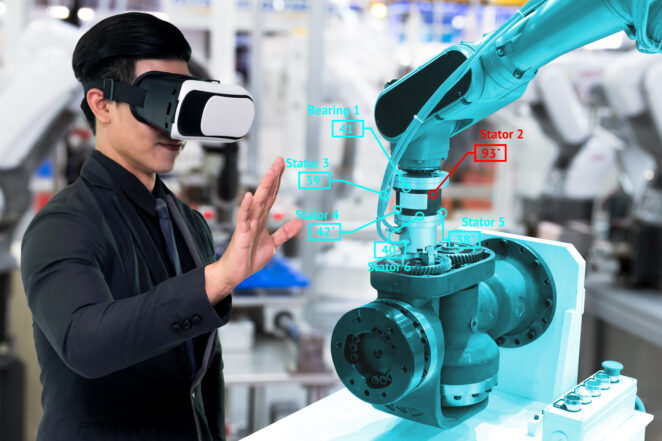
The buzzword here, is then, a technology-created Generative Design, which has a near-perfect chance of going on to become a new product. An extension of this idea is 3D printing also referred to as Additive Manufacturing.
The real challenge to 3D printing is scalability. The key advantage, when this happens, will be a reduction in environmental pollution that the global supply chain is causing.
In 3D printing, the manufacturer simply sends data over the internet to a printer. The product’s parts are not sourced from actual physical locations. In a sense, manufacturing is getting smarter, leaner, and cleaner through digital solutions.
Even otherwise, products and design changes in manufacturing, today, are digitized, distributed, and democratized forms of creation, rather than ghettoed factories or assembly lines.
Another important digital transformation instance, a work-in-progress, is the self-driven car. For the project to be a success, it is important to ensure that data on its safety is convincing. The two global major corporations invested in this project have, in total, collected over 18 billion data points.
Here, digital transformation, humungous data, plus predictions generated through data will prove life-saving and critical. The end product could also be a business category in its own right.
5. Retail: Experience sells
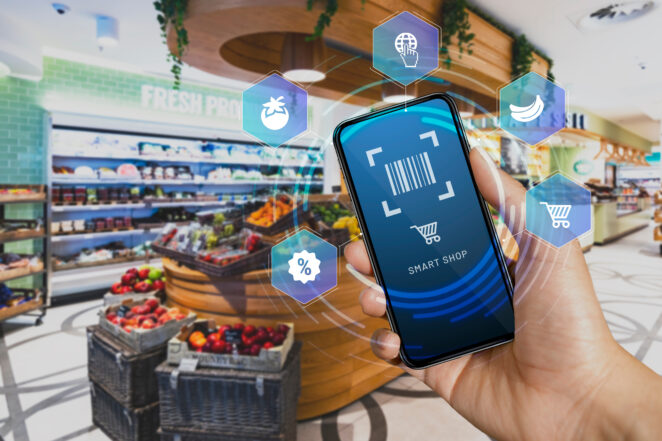
“Don’t hide from the one you are seeking,” goes the punchline of an advertisement of a Fast-Moving Consumer Goods (FMCG) brand. For all big players in the digital retail market today, there is no hide-and-seek. These global corporations have married their operations with technology and are living a contented life.
Technology adoption is harder for smaller players to internalize as they lack the wherewithal or resources to transform the in-store personal experience of the customer.
Today. the store manager at an international brand, online retailer, or restaurant is able to address you by name. These entities also tell you, “Hello Mr/Ms. X, you ordered a ‘Healthy Heart Pizza’ last time you visited, will you like a repeat?”
For the busy consumer, this saves time. Voila! We have a quick sale.
This kind of experience needs sales volume, technology innovation, and an understanding of the consumer mindset. Geography is immaterial, though sometimes countries mandate physical infrastructure like warehouses to be built, as a kind of protectionist measure for individual stores.
In retail, high-end stores have developed apps that allow a ‘virtual trial’ of garments. In furniture retail, global market leaders have developed technology to allow the virtual creation of a customer’s premises and see how a chair will fit into that very-personal ambiance.
It is as if technology will allow a mall experience to come home soon, without the customer stepping out.

Another example of this customization and opening up of another sales channel is the emerging trend of social media shopping. Online communities and dating apps have emerged as major influencers for purchasers. Users navigate to their favored content creators or influencers and imitate their purchases. In an instance of the trend gaining an even deeper hold, women can try cosmetics on some sites, again, by just uploading their photos.
It is clear that retail is set for a big digital transformation, where customer convenience delivered through researched data points will matter. The product will be bought more for its utility. For the same utility, the business offering a better experience will get the customer’s dollar.


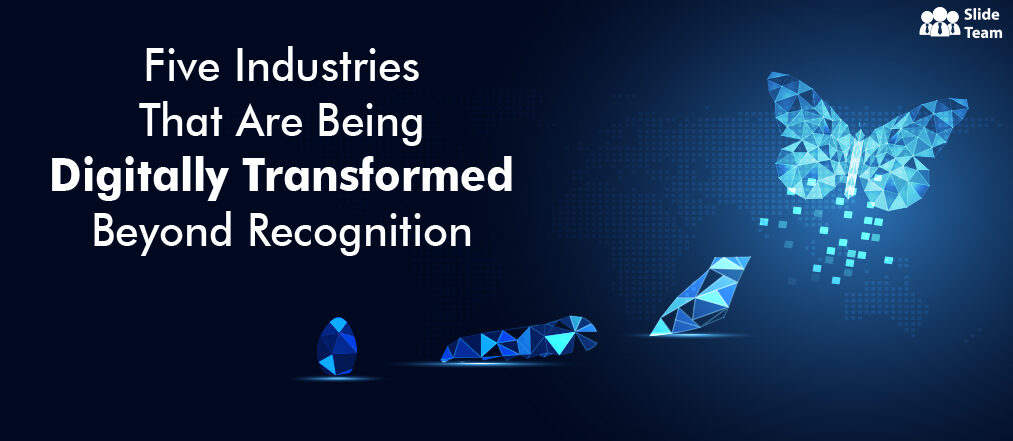


 Customer Reviews
Customer Reviews

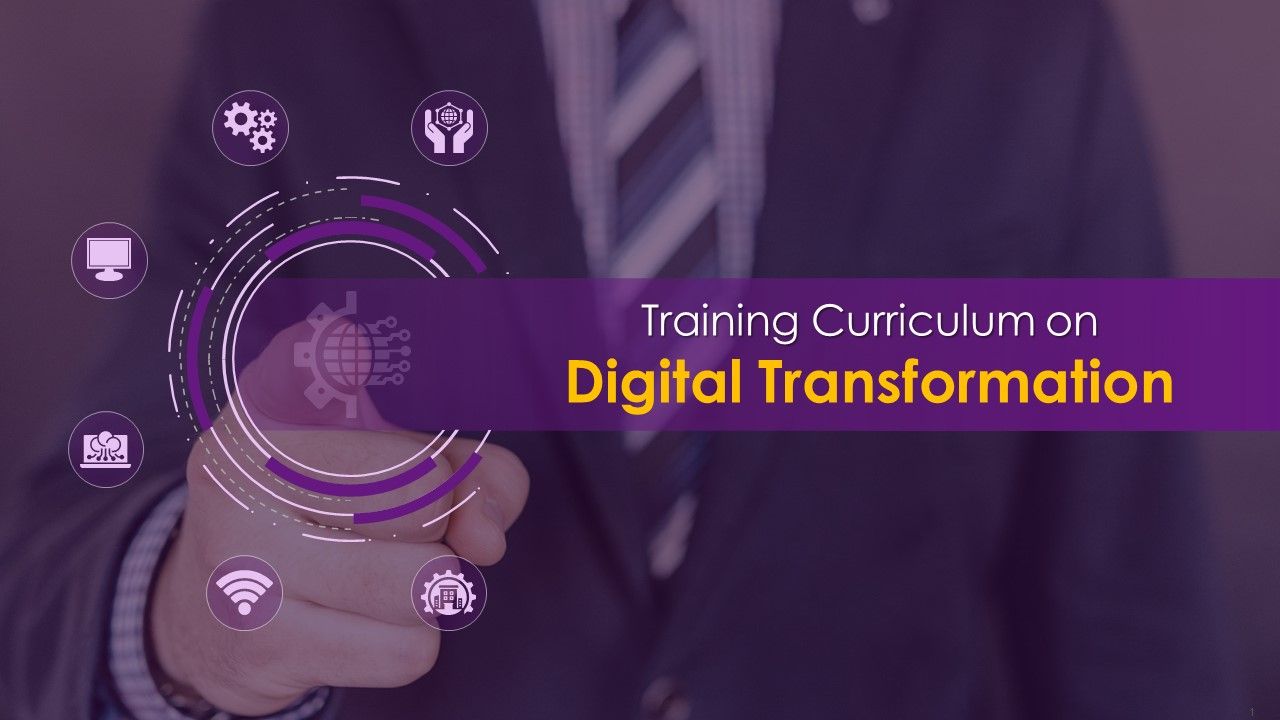



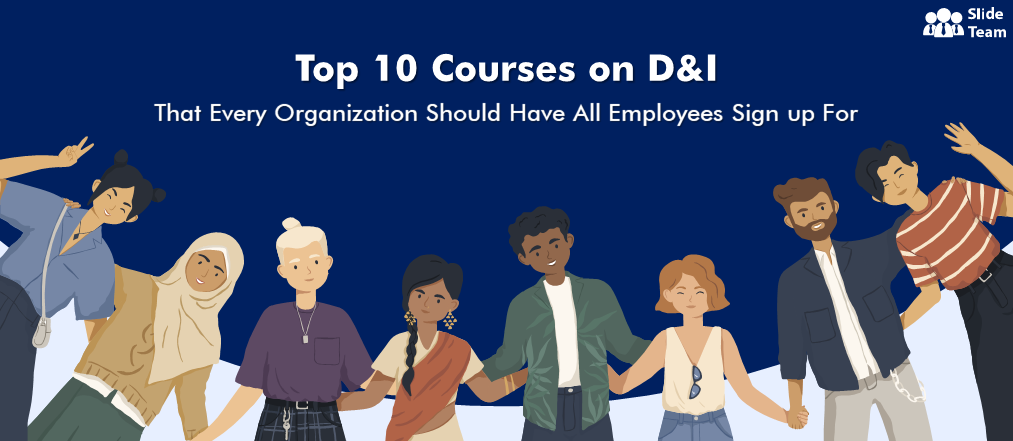
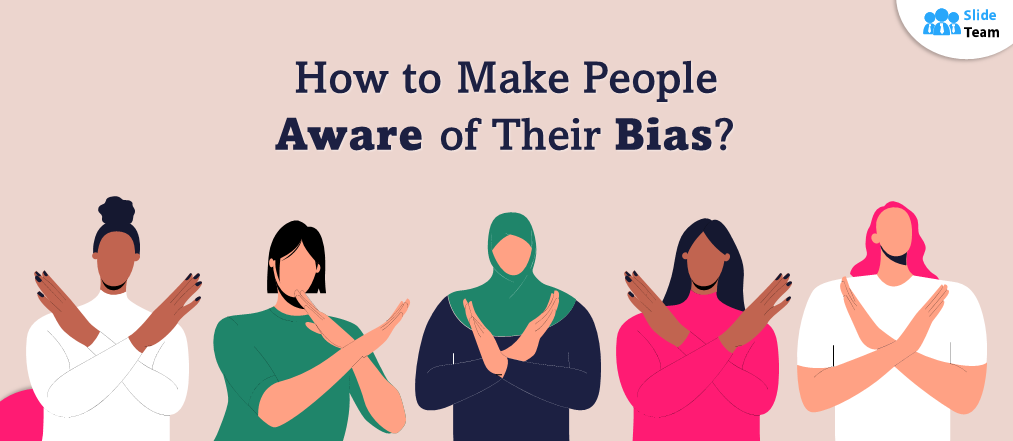
![A Complete Guide to Diversity & Inclusion Training for Corporate Employees With Training Material Included [Free PDF Attached]](https://www.slideteam.net/wp/wp-content/uploads/2022/03/Diversity-Inclusion-Training_1-1013x441.png)
